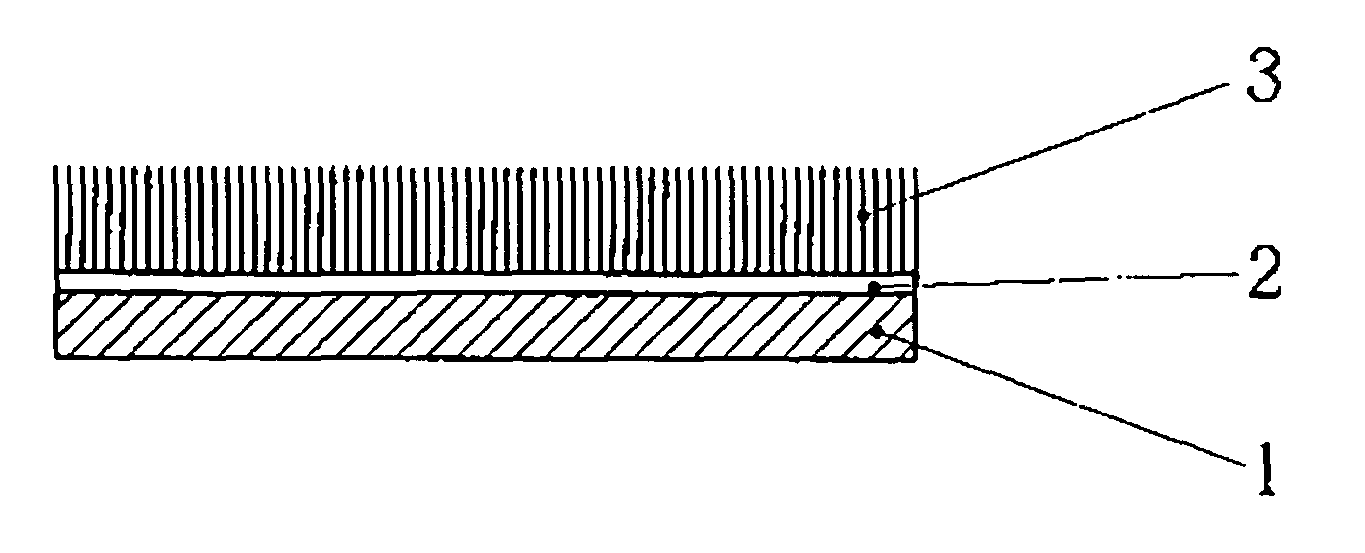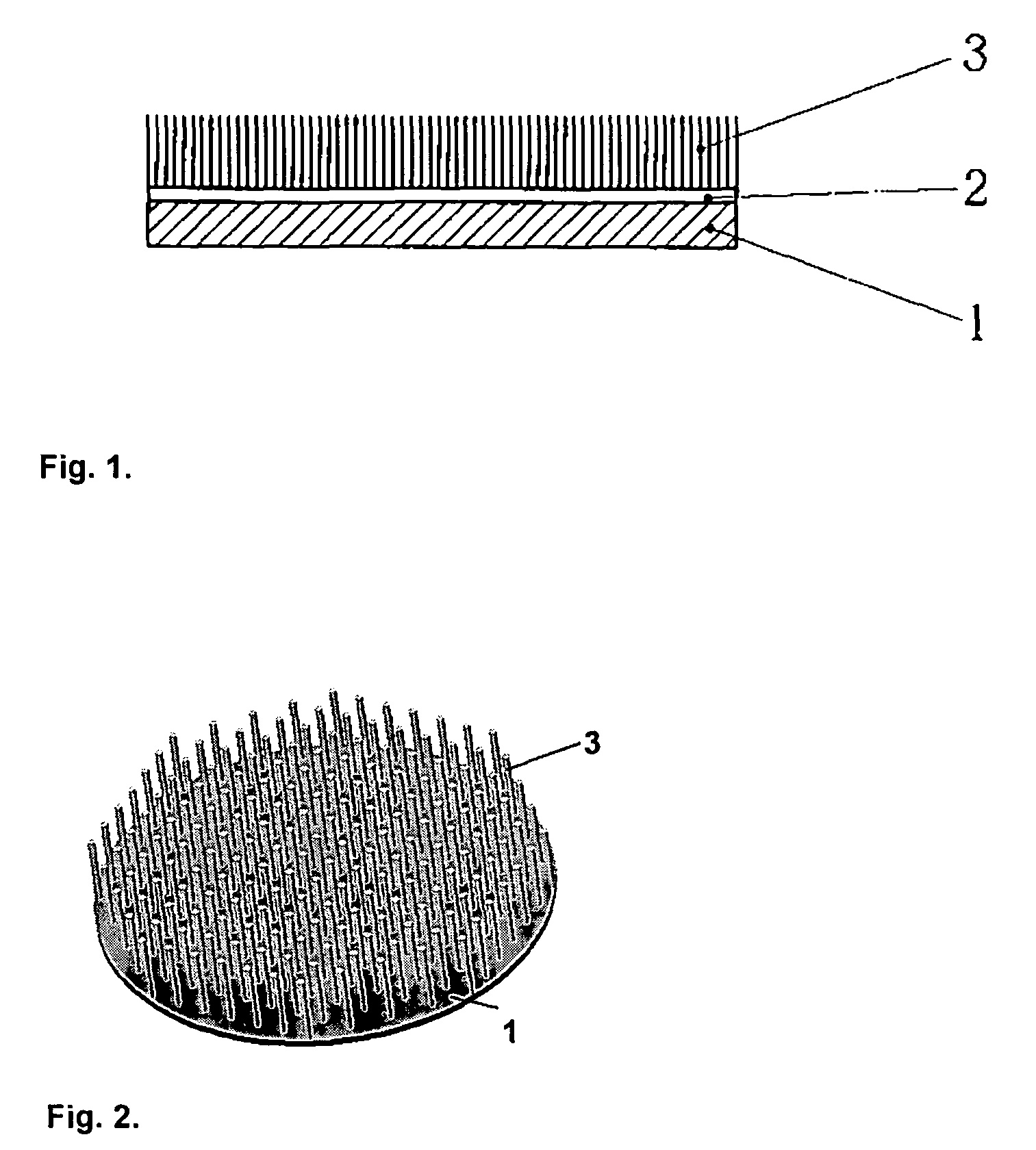Support material for tissue engineering, for producing implants or implant materials, and an implant produced with the support material
a technology for supporting materials and tissue engineering, which is applied in the direction of skin implants, biochemistry apparatus and processes, prosthesis, etc., can solve the problems of low compressive stability of scaffolds made of textile materials, non-woven materials, fiber textiles or knitted textiles, and inhomogeneous structure of non-woven structures, etc., to achieve high fiber density
- Summary
- Abstract
- Description
- Claims
- Application Information
AI Technical Summary
Benefits of technology
Problems solved by technology
Method used
Image
Examples
Embodiment Construction
[0072]The scaffold represented in FIG. 1 consists of a flat base material 1, which is coated with an adhesive layer 2 on one side and electrostatically flocked with fibers 3 that are 1 mm long.
[0073]A mineralized hydroxyapatite-collagen-tape with a diameter of 7 cm and a mean thickness of 0.2 mm was selected as a biocompatible, resorbable base material 1. The hydroxyapatite-collagen-tape is produced from mineralized collagen (EP 0 945 146, EP 0 945 147, U.S. Pat. No. 6,384,196, U.S. Pat. No. 6,384,197, J.-H. Bradt, M. Mertig, A. Teresiak, W. Pompe: Biomimetic mineralization of collagen by combined fibril assembly and calcium phosphate formation. Chem. Mater. 1999, 11, 2694-2701), as described in R. Burth, M. Gelinsky, W. Pompe: Collagen-hydroxyapatite tapes—a new implant material, Tech. Textile 1999, 8, 20-21.
[0074]The adhesive 2 consists of Pharma-Gelatine, DGF Stoess AG, Eberbach, Germany, a biocompatible, resorbable material.
[0075]The fibers 3 have a length of 1 mm and a diameter...
PUM
| Property | Measurement | Unit |
|---|---|---|
| length | aaaaa | aaaaa |
| length | aaaaa | aaaaa |
| diameter | aaaaa | aaaaa |
Abstract
Description
Claims
Application Information
 Login to View More
Login to View More - R&D
- Intellectual Property
- Life Sciences
- Materials
- Tech Scout
- Unparalleled Data Quality
- Higher Quality Content
- 60% Fewer Hallucinations
Browse by: Latest US Patents, China's latest patents, Technical Efficacy Thesaurus, Application Domain, Technology Topic, Popular Technical Reports.
© 2025 PatSnap. All rights reserved.Legal|Privacy policy|Modern Slavery Act Transparency Statement|Sitemap|About US| Contact US: help@patsnap.com



